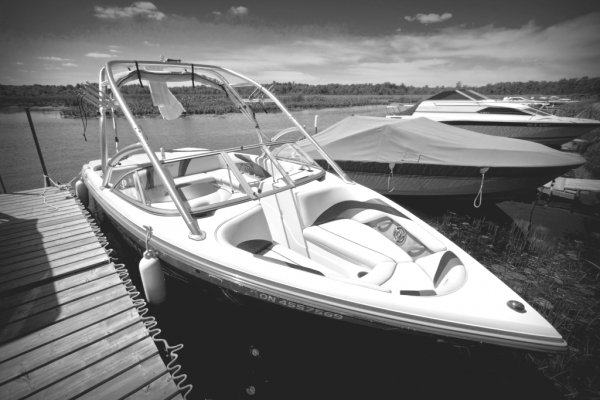A fenders sole purpose is to provide a cushion between you boat and whatever you may be tying up to, whether it be a wood or metal dock, a piling, or even another boat. Acting as a cushion, they absorb the shock of your boats movement and minimize the risk of any possible damage.
There are a few types of fenders, which are all meant for different scenario's and boat sizes. So a 14 foot boat won't use the same size or style fender necessarily as a 30 foot boat would. The three basic styles are Cylindrical Fenders, Round Fenders, and Hybrid Fenders. Your most common fender would have to be a cylindrical Fender which look exactly how they sound, like a long cylinder. They have an eye at the top for attaching a rope so that they can be hung vertically. Sometimes they have two eyes or a whole all the way down the center to put a rope through so that it can be hung horizontally. You would use this style for tying to pilings or walls. The next style are round fenders which are commonly used with commercial vessels. These create the most amount of space between the boat and what it is tied up to. Larger pleasure boats can use these too if the captain is a real worry wart and wants that little bit of extra protection. They also work well when rafting because boats that are tied together will rock differently in the waves. Having fenders wide enough to keep rub rails from knocking together should prevent that problem. Round fenders do not do so well with pilings though, so don't try it. The last is what is know as a hybrid fender. It is the best of both worlds. Hybrid fenders are a mix between the cylindrical and round fenders. These work great vertically and can be hung in the horizontal position as well.
| BOAT SIZE | CYLINRICAL FENDER | ROUND FENDER | HYBRID FENDER |
| Up to 15' | 3-1/2" |
8" | 6" |
| 10' - 20' | 4-1/2" | 8" | 6" |
| 15' - 25' | 5-1/2" to 6-1/2" | 9" | 6" |
| 25' - 40' | 6-1/2" to 8-1/2" | 11-1/2" to 12" | 8" |
| 35' - 50' | 10 to 10-1/2" | 15" to 15-1/2" | 10" |
| 45' - 60' | 12" | 18" to 18-1/2" | 12" |
| 55' - 70' | 12" | 21" to 21-1/2" | 15" |
For the most part you are going to want to have enough fenders aboard to make sure that at least one side of your boat is safe from pounding into wherever it is that you are docking. Usually 3 fenders is a good number to have. If your boat stays on the water for long periods of time, adding one or two more wont hurt. That way if something happens to a fender or it comes untied, you still have another one back it up. If your a social boater and like to raft up with other boats, you will want to have enough for both sides of your boat.
When rafting with other boats use your largest round fenders and hang them over the edge from the rail or cleats. This should keep your rub rails from knocking together. If you are tying off to a dock or wall with cleats or something of the sort, then cylindrical fenders are going to be your best option. If the dock you are tying off to has larger pilings then hanging cylindrical fenders in the vertical position is not going to work. In this scenario you will want to hang them in the horizontal position. Placing the fender horizontally and centered on the piling will ensure that the fender stays between the piling and your boat whether the water is calm or rough. If you don't do this, the fender will probably end up on one side of the piling or the other.
The concept of a fender and the proper use of them may seem pretty basic to most, but believe it or not I see boaters all the time who have no idea. They think a fender is a fender is a fender, but in actuality they all have a basic design purpose and application of use. I always say use the right tool for the job, especially if it is protecting something as important to you as your boat.


